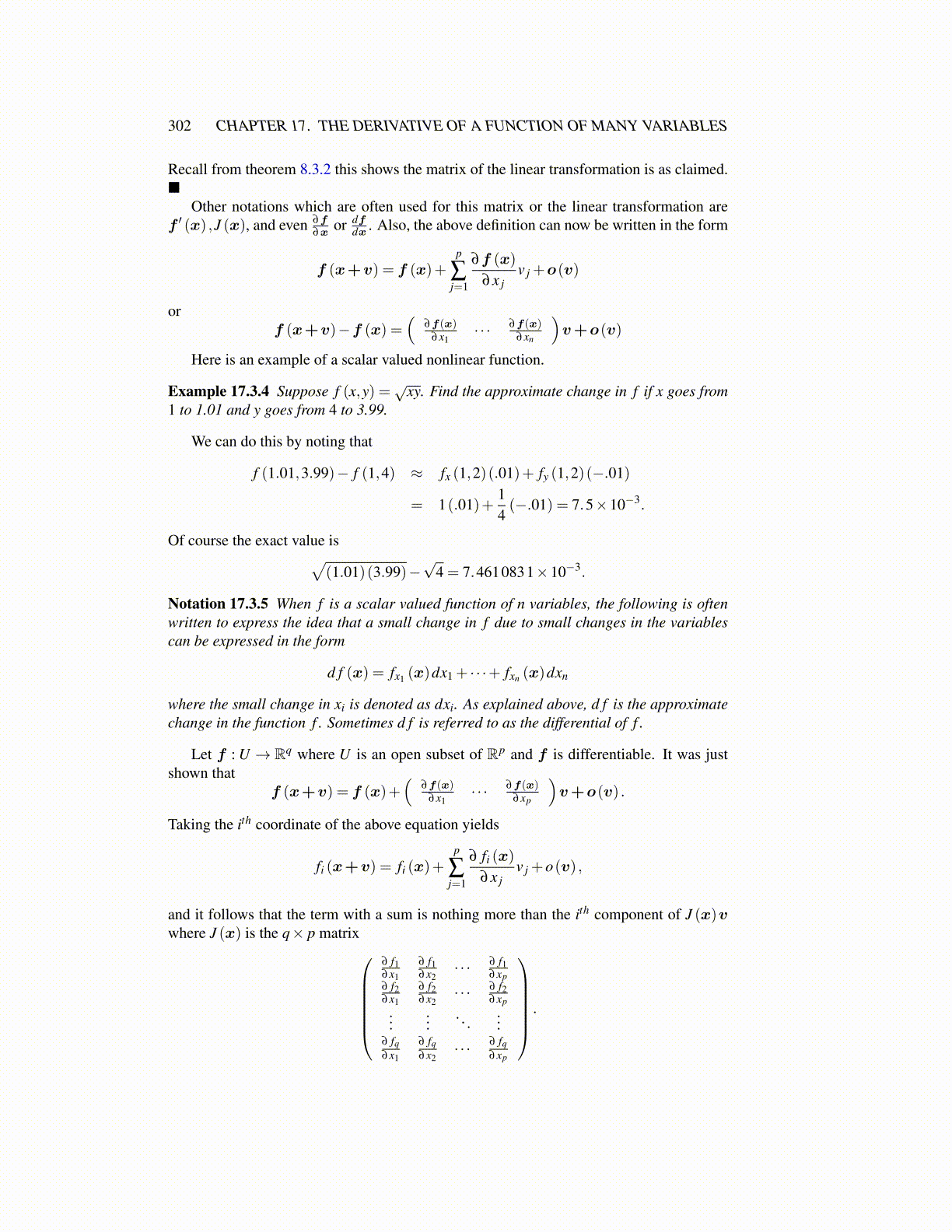
302 CHAPTER 17. THE DERIVATIVE OF A FUNCTION OF MANY VARIABLES
Recall from theorem 8.3.2 this shows the matrix of the linear transformation is as claimed.■
Other notations which are often used for this matrix or the linear transformation aref ′ (x) ,J (x), and even ∂f
∂xor df
dx . Also, the above definition can now be written in the form
f (x+v) = f (x)+p
∑j=1
∂f (x)
∂x jv j +o(v)
orf (x+v)−f (x) =
(∂f(x)
∂x1· · · ∂f(x)
∂xn
)v+o(v)
Here is an example of a scalar valued nonlinear function.
Example 17.3.4 Suppose f (x,y) =√
xy. Find the approximate change in f if x goes from1 to 1.01 and y goes from 4 to 3.99.
We can do this by noting that
f (1.01,3.99)− f (1,4) ≈ fx (1,2)(.01)+ fy (1,2)(−.01)
= 1(.01)+14(−.01) = 7.5×10−3.
Of course the exact value is√(1.01)(3.99)−
√4 = 7.4610831×10−3.
Notation 17.3.5 When f is a scalar valued function of n variables, the following is oftenwritten to express the idea that a small change in f due to small changes in the variablescan be expressed in the form
d f (x) = fx1 (x)dx1 + · · ·+ fxn (x)dxn
where the small change in xi is denoted as dxi. As explained above, d f is the approximatechange in the function f . Sometimes d f is referred to as the differential of f .
Let f : U → Rq where U is an open subset of Rp and f is differentiable. It was justshown that
f (x+v) = f (x)+(
∂f(x)∂x1
· · · ∂f(x)∂xp
)v+o(v) .
Taking the ith coordinate of the above equation yields
fi (x+v) = fi (x)+p
∑j=1
∂ fi (x)
∂x jv j +o(v) ,
and it follows that the term with a sum is nothing more than the ith component of J (x)vwhere J (x) is the q× p matrix
∂ f1∂x1
∂ f1∂x2
· · · ∂ f1∂xp
∂ f2∂x1
∂ f2∂x2
· · · ∂ f2∂xp
......
. . ....
∂ fq∂x1
∂ fq∂x2
· · · ∂ fq∂xp
.